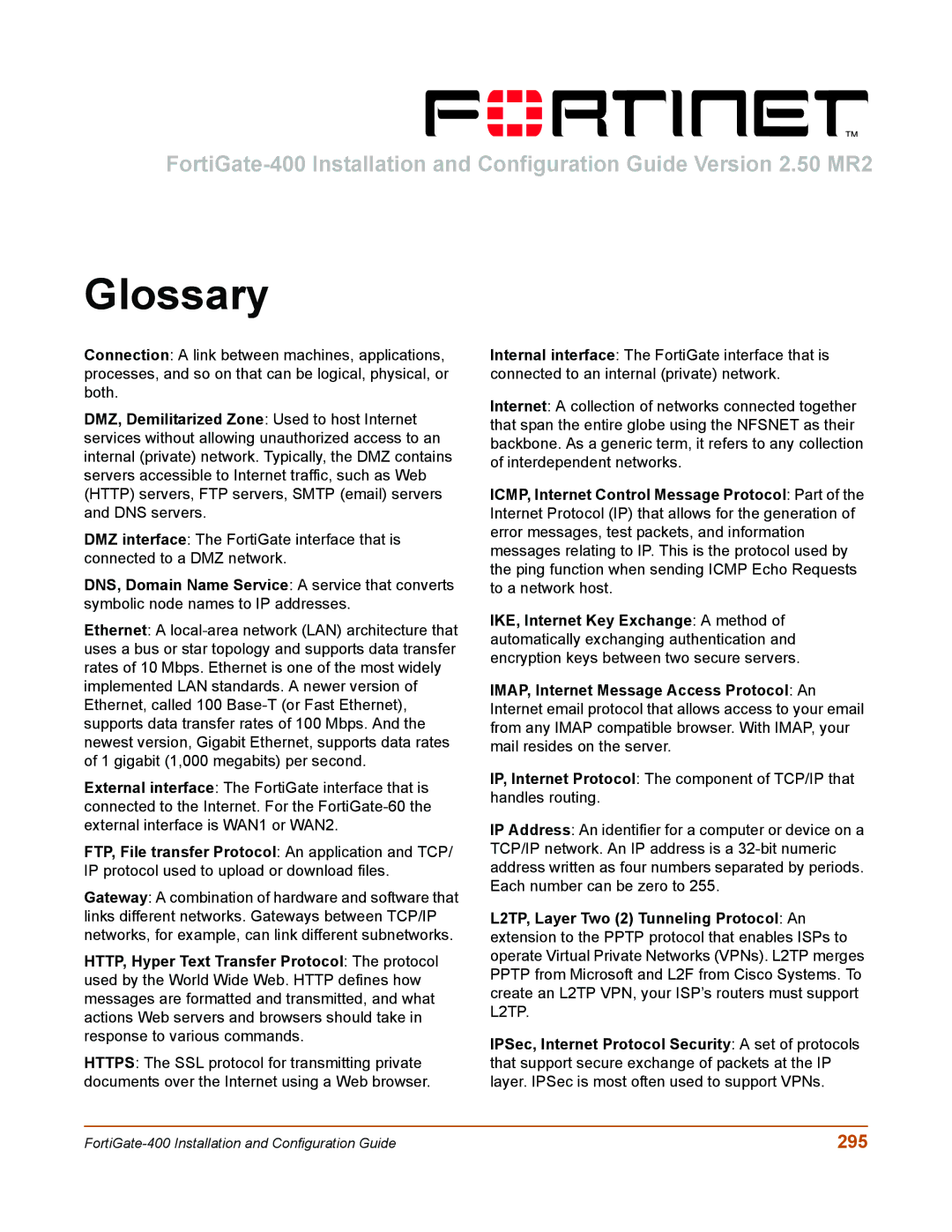
Glossary
Connection: A link between machines, applications, processes, and so on that can be logical, physical, or both.
DMZ, Demilitarized Zone: Used to host Internet services without allowing unauthorized access to an internal (private) network. Typically, the DMZ contains servers accessible to Internet traffic, such as Web (HTTP) servers, FTP servers, SMTP (email) servers and DNS servers.
DMZ interface: The FortiGate interface that is connected to a DMZ network.
DNS, Domain Name Service: A service that converts symbolic node names to IP addresses.
Ethernet: A
External interface: The FortiGate interface that is connected to the Internet. For the
FTP, File transfer Protocol: An application and TCP/ IP protocol used to upload or download files.
Gateway: A combination of hardware and software that links different networks. Gateways between TCP/IP networks, for example, can link different subnetworks.
HTTP, Hyper Text Transfer Protocol: The protocol used by the World Wide Web. HTTP defines how messages are formatted and transmitted, and what actions Web servers and browsers should take in response to various commands.
HTTPS: The SSL protocol for transmitting private documents over the Internet using a Web browser.
Internal interface: The FortiGate interface that is connected to an internal (private) network.
Internet: A collection of networks connected together that span the entire globe using the NFSNET as their backbone. As a generic term, it refers to any collection of interdependent networks.
ICMP, Internet Control Message Protocol: Part of the Internet Protocol (IP) that allows for the generation of error messages, test packets, and information messages relating to IP. This is the protocol used by the ping function when sending ICMP Echo Requests to a network host.
IKE, Internet Key Exchange: A method of automatically exchanging authentication and encryption keys between two secure servers.
IMAP, Internet Message Access Protocol: An Internet email protocol that allows access to your email from any IMAP compatible browser. With IMAP, your mail resides on the server.
IP, Internet Protocol: The component of TCP/IP that handles routing.
IP Address: An identifier for a computer or device on a TCP/IP network. An IP address is a
L2TP, Layer Two (2) Tunneling Protocol: An extension to the PPTP protocol that enables ISPs to operate Virtual Private Networks (VPNs). L2TP merges PPTP from Microsoft and L2F from Cisco Systems. To create an L2TP VPN, your ISP’s routers must support L2TP.
IPSec, Internet Protocol Security: A set of protocols that support secure exchange of packets at the IP layer. IPSec is most often used to support VPNs.
295 |
